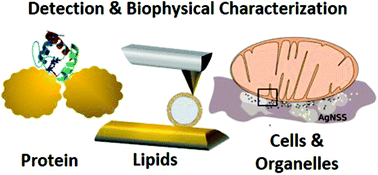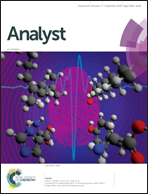Advances in surface-enhanced Raman spectroscopy (SERS) substrates for lipid and protein characterization: sensing and beyond
Abstract
Surface-enhanced Raman spectroscopy (SERS) has become an essential ultrasensitive analytical tool for biomolecular analysis of small molecules, macromolecular proteins, and even cells. SERS enables label-free, direct detection of molecules through their intrinsic Raman fingerprint. In particular, protein and lipid bilayers are dynamic three-dimensional structures that necessitate label-free methods of characterization. Beyond direct detection and quantitation, the structural information contained in SERS spectra also enables deeper biophysical characterization of biomolecules near metallic surfaces. Therefore, SERS offers enormous potential for such systems, although making measurements in a nonperturbative manner that captures the full range of interactions and activity remains a challenge. Many of these challenges have been overcome through advances in SERS substrate development, which have expanded the applications and targets of SERS for direct biomolecular quantitation and biophysical characterization. In this review, we will first discuss different categories of SERS substrates including solution-phase, solid-supported, tip-enhanced Raman spectroscopy (TERS), and single-molecule substrates for biomolecular analysis. We then discuss detection of protein and biological lipid membranes. Lastly, biophysical insights into proteins, lipids and live cells gained through SERS measurements of these systems are reviewed.

- This article is part of the themed collection: Recent Review Articles


 Please wait while we load your content...
Please wait while we load your content...